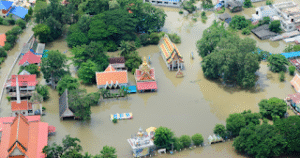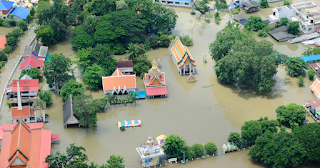Natural Disasters: Understanding, Preparedness, and Response

Natural Disasters: Understanding, Preparedness, and Response |
Types of Natural Disasters
Natural disasters can be broadly categorized based on their origin:
- Geological Disasters: These include events like earthquakes, volcanic eruptions, tsunamis, and landslides. They are primarily caused by movements within the Earth’s crust.
- Meteorological Disasters: Events such as hurricanes, tornadoes, floods, and droughts fall into this category. They result from atmospheric processes and changes in weather patterns.
- Hydrological Disasters: These include floods, tsunamis, and avalanches, caused by water-related processes.
- Climatological Disasters: Events like droughts, extreme temperatures, and wildfires are categorized here. They are influenced by long-term climatic patterns.
- Biological Disasters: Pandemics, insect infestations, and other disease outbreaks that can devastate human populations and ecosystems.
- Man-made Disasters: While not entirely natural, human activities can exacerbate or trigger natural disasters, such as oil spills, nuclear accidents, and deforestation leading to landslides.
Causes of Natural Disasters
The causes of natural disasters are complex and multifaceted, often involving interactions between natural and human systems. For instance, climate change, driven by human activities, has increased the frequency and severity of many meteorological and climatological disasters.
- Tectonic Activity: The movement of the Earth’s plates is the primary cause of geological disasters like earthquakes and volcanic eruptions. This movement is due to the heat generated within the Earth’s core, causing plates to shift and collide.
- Atmospheric Conditions: Changes in atmospheric pressure, temperature, and moisture can lead to meteorological disasters. For example, hurricanes form when warm ocean water provides energy to a developing storm system.
- Hydrological Factors: Excessive rainfall, snowmelt, or rapid water release from dams can cause floods. Conversely, prolonged periods of low rainfall can lead to droughts.
- Climatic Changes: Long-term changes in climate, such as global warming, have led to more frequent and intense heatwaves, wildfires, and storms.
- Human Activities: Deforestation, urbanization, and industrial activities can increase the risk of landslides, floods, and other disasters by altering natural landscapes and increasing greenhouse gas emissions.
Impacts of Natural Disasters
Natural disasters have far-reaching consequences, affecting nearly every aspect of life:
- Human Lives: The most immediate and tragic impact is the loss of life. Disasters like earthquakes, tsunamis, and hurricanes can kill thousands in seconds.
- Infrastructure: Buildings, roads, bridges, and utilities can be severely damaged or destroyed. This not only disrupts daily life but also hampers emergency response efforts.
- Economy: The economic impact of natural disasters can be staggering, with billions of dollars in damage. Recovery efforts, loss of income, and the cost of rebuilding can strain national economies.
- Environment: Natural disasters can lead to the destruction of ecosystems, loss of biodiversity, and long-term environmental degradation. For example, wildfires can destroy forests, and floods can contaminate water supplies.
- Psychosocial Impact: The trauma of experiencing a natural disaster can lead to long-term mental health issues, such as PTSD, anxiety, and depression.
September is National Preparedness Month
National Preparedness Month is observed every September to encourage Americans to prepare for emergencies, including natural disasters. The campaign emphasizes the importance of planning, training, and staying informed to minimize the impact of disasters on individuals, families, and communities.
The Color of the Campaign
Preparedness and Response
Preparedness is the key to mitigating the impacts of natural disasters. Here are some strategies and actions to enhance preparedness:
- Develop an Emergency Plan: Individuals and families should have a plan that includes evacuation routes, emergency contacts, and a communication strategy. This plan should be practiced regularly to ensure everyone knows what to do during a disaster.
- Build an Emergency Kit: An emergency kit should include essential items such as water, non-perishable food, medications, first aid supplies, flashlights, batteries, and important documents.
- Stay Informed: Keeping track of weather alerts, news updates, and local emergency services is crucial. Many disasters, such as hurricanes and floods, provide some advance warning, giving people time to prepare.
- Community Involvement: Engaging with community preparedness programs and participating in drills can strengthen local response efforts. Community resilience is often the first line of defense in a disaster.
- Mitigation Measures: Implementing measures like building flood defenses, enforcing building codes in earthquake-prone areas, and creating firebreaks can reduce the impact of disasters.
- Education and Training: Educating the public about the risks and how to respond is vital. Training programs, especially in schools and workplaces, can save lives by ensuring that people know how to act in an emergency.
Response and Recovery
Once a disaster occurs, the response must be swift and coordinated to minimize damage and save lives. The following steps are typically involved in disaster response and recovery:
- Immediate Response: The first 24-72 hours after a disaster are critical. Search and rescue operations, medical aid, and providing shelter to the affected population are the top priorities.
- Assessment: Assessing the damage and needs is essential for directing resources effectively. This includes evaluating the extent of destruction, the number of people affected, and the most pressing needs.
- Coordination: Effective disaster response requires coordination between various agencies, including government, NGOs, and international organizations. This ensures that efforts are not duplicated and resources are used efficiently.
- Recovery and Reconstruction: After the immediate crisis has passed, efforts shift to rebuilding infrastructure, restoring services, and supporting the long-term recovery of the affected communities. This phase can take months or even years, depending on the severity of the disaster.
Major Institutions Involved in Natural Disaster Preparedness and Response
Several organizations play a crucial role in natural disaster preparedness and response. These institutions provide resources, guidance, and support to individuals, communities, and governments:
- Federal Emergency Management Agency (FEMA): FEMA is the primary agency responsible for coordinating disaster response and recovery efforts in the United States. They offer extensive resources for preparedness and provide assistance during and after disasters. FEMA Website
- The Red Cross: The Red Cross provides emergency assistance, disaster relief, and education. They are often among the first responders to disasters, offering shelter, food, and medical care. Red Cross Website
- World Health Organization (WHO): WHO plays a vital role in managing the health aspects of natural disasters, including pandemics. They provide guidelines, resources, and support to countries during health emergencies. WHO Website
- United Nations Office for Disaster Risk Reduction (UNDRR): UNDRR works to reduce disaster risk worldwide by promoting policies, practices, and strategies that minimize the impact of disasters. UNDRR Website
- National Oceanic and Atmospheric Administration (NOAA): NOAA provides critical weather forecasts, warnings, and climate monitoring to help communities prepare for natural disasters. NOAA Website
- Centers for Disease Control and Prevention (CDC): The CDC offers resources and information on how to stay safe during public health emergencies, such as disease outbreaks and pandemics. CDC Website
Conclusion
Natural disasters are an inevitable part of life on Earth, but their impacts can be mitigated through understanding, preparedness, and coordinated response efforts. By recognizing the types and causes of disasters, preparing for them, and knowing how to respond effectively, individuals and communities can reduce the devastation caused by these events. National Preparedness Month serves as a reminder of the importance of readiness, encouraging everyone to take proactive steps to protect themselves, their families, and their communities from the unpredictable forces of nature.
